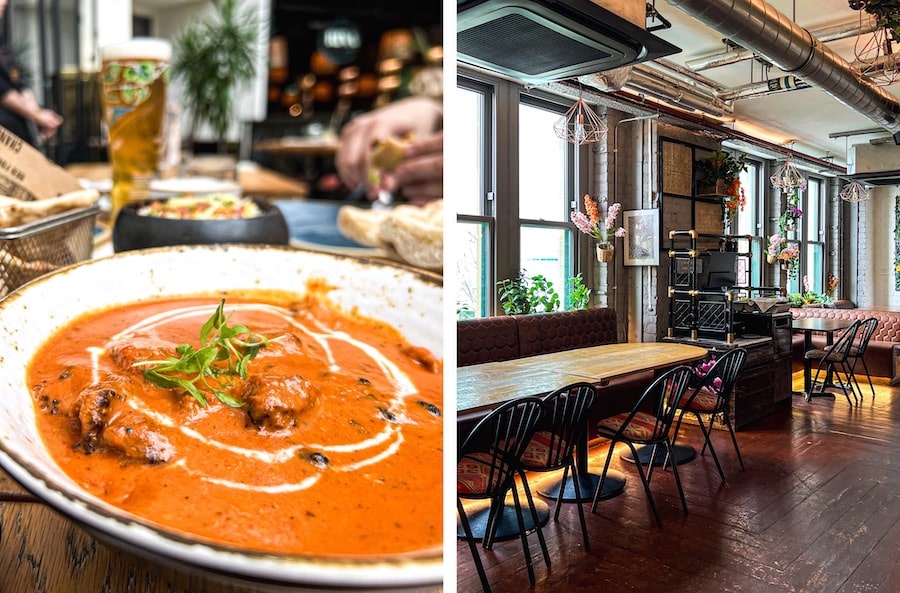Mana from heaven: new Ancoats restaurant is a gastronomic game changer
- Written by Louise Rhind-Tutt
- Last updated 3 years ago
- City of Manchester, Food & Drink
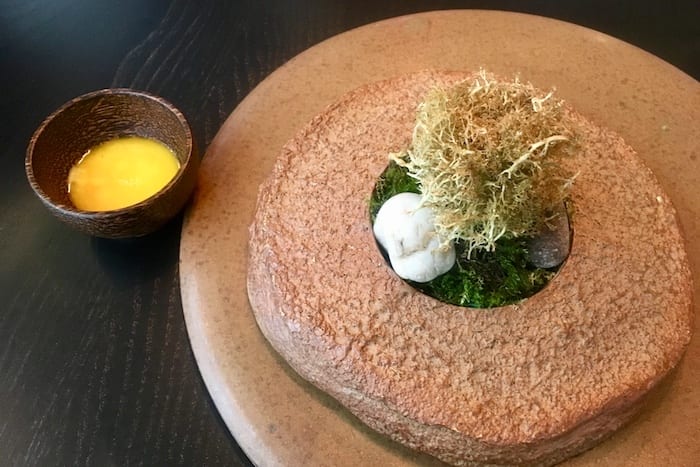
It’s fair to say there are high hopes for new restaurant Mana.
The new Ancoats opening is chef Simon Martin’s first venture since leaving the internationally renowned – and two-Michelin-starred – Noma in Copenhagen, which was named the best restaurant in the world for four years.
Simon recently said that he hopes Mana will be accessible to all. “We’re not following a recipe, we’re creating one,” he explained. “It’s about progressing, moving things forward – and we want that to be accessible. It’s not solely for some elite group of ‘gastronomes’.”

But the set menu costs £95 a head, excluding drinks – and features unusual ingredients such as reindeer moss, biodynamic radish and kelp fudge. On the surface at least, it doesn’t scream “accessible”.
So how does the new venture – which is run with co-owner Will Cottis and director of operations Anthony Barnes, who previously owned Ancoats restaurant Squid Ink – stack up?
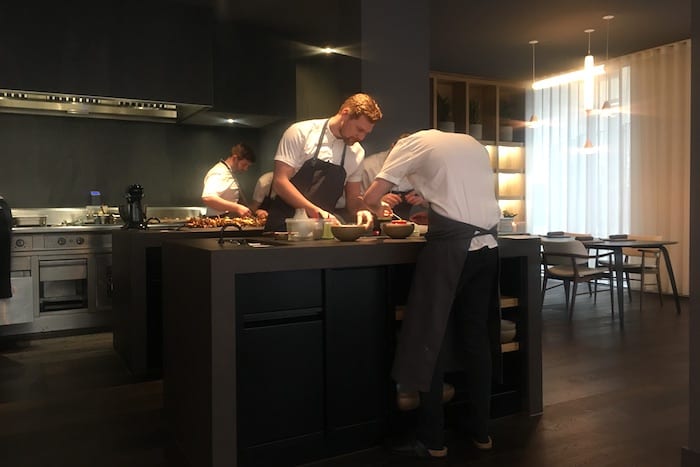
It’s busy on the Saturday lunchtime I visit – clearly the city is intrigued by this new addition. There’s no printed menu, so I don’t really know what I’m going to be eating.
But the view of the bespoke open kitchen, which reportedly cost £300,000, is compelling: it exudes calmness, precision, creativity and collaboration. It’s a bit like watching a culinary ballet. I’m captivated.
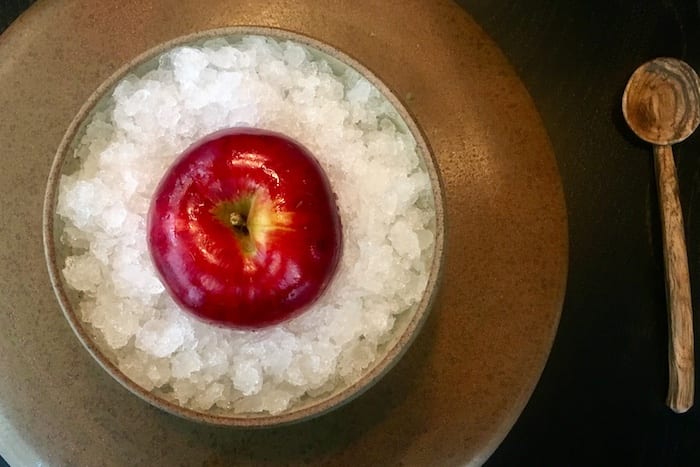
Service is slick and friendly. The first dish to appear is “first apple of the autumn season.” It looks like a beautifully shiny red apple in a bowl of ice. Snow White would definitely take a bite out of this.
But there’s more to it, of course. Lift its lid and there’s fermented apple, two different types of wild apple, the juice from another six types of apple, and fragrant rose oil. It’s delightful.

Next up is “autumn bark.” It consists of crisp malt flatbreads topped with juniper crème fraîche, barbecued lemon thyme paste, nasturtiums, sorrel, and a spray of pine vinegar.
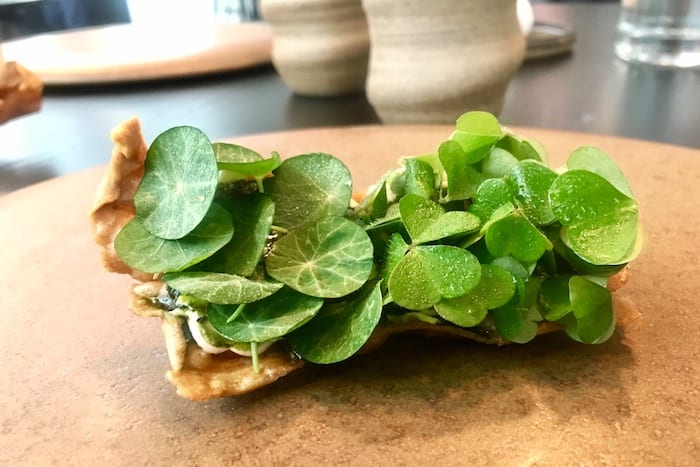
The next dish has already started people talking on social media. It’s fried reindeer moss with cep powder and thyme salt on top, and smoked egg yolk (see main pic).
“The best way to eat it is to rip it apart and dip it in the egg,” says our server. The reindeer moss is from the Isle of Skye, he tells us. It also grows in Scandinavia, where reindeer eat it, and it tends to grow in places with very clean air.
Eggs are cured in brine for about two hours to make the dip, and there are also sous vide eggs cooked for an hour at 58 degrees. They’re mixed together and emulsified with smoked garlic butter. It’s a superb dish – crisp, crunchy and savoury with a rich smokiness from the dip.
“It’s a bit like beef Monster Munch,” says my dining companion. I laugh, but I know exactly what he means.
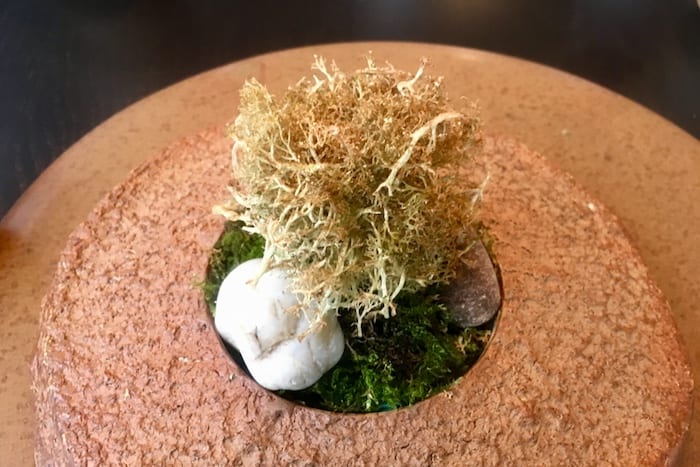
Scallops are next, three snowy white slices brushed with bronze. “We get them in live and shuck them here,” says Simon about the delicate scallops, which are served raw. On top is a “fudge” made from cucumber and piso. Piso?
“Piso is like miso, but instead of using soya beans we use yellow split peas,” says the chef. “There’s English wasabi we get from Suffolk, and a juice made from sorrel and mussels.”
Fudge? I realise I’m just repeating words back to the chef as single word questions. I want to know what I’m eating here. Not everything is familiar.
“It’s 400 litres of cucumber juice taken down to one litre, then we mix it with fermented yellow peas,” he explains. The dish is exquisite. I’d lick the bowl if nobody was watching.
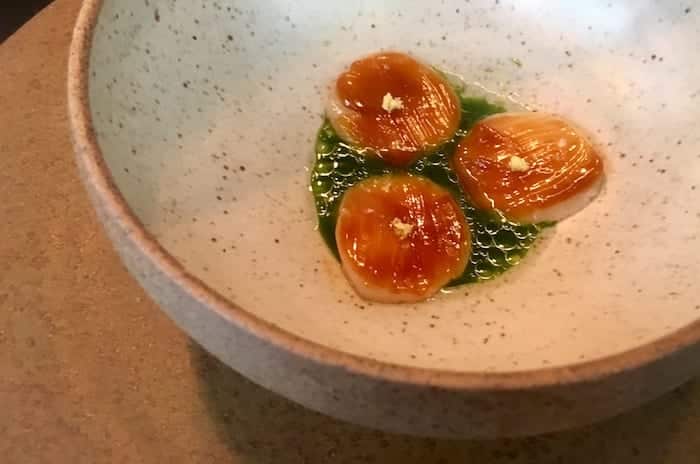
Dishes come thick and fast. Biodynamic radish, served with kelp fudge and coriander. “Eat the greens first then dip the radish into the kelp fudge on the side,” says the chef. Kelp fudge? I suspect I’ll be asking a lot of questions during this lunch.
“We roast the kelp and make a kelp oil, then there’s some butter we’ve melted to room temperature, and a cucumber reduction.”
A skewer arrives, and we suddenly realise how vegetable-heavy all the previous dishes have been.

Smoked eel, which has come from Devon, is briefly marinated in blueberry vinegar then brushed with a yeast reduction and cooked over a yakitori barbecue. It’s rich, smoky and intensely savoury. It’s the best dish yet.
A bowl of fresh milk curds, raw walnut, fermented cep and lovage sauce dotted with fresh marigold is pretty as a picture and tastes fresh and green, like it must be good for you.
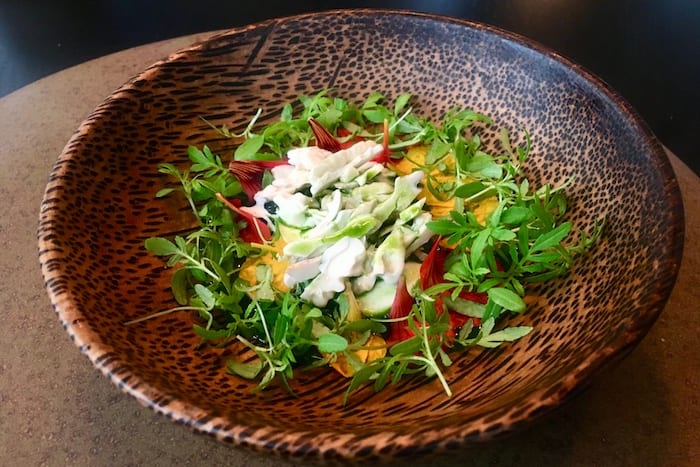
Barbecued brassica is four large, dark leaves from the mustard family, brushed with smoked garlic butter and grilled on the barbecue. We season them with a paste made from dehydrated scallops and beeswax. There’s a hint of horseradish for spice. It’s a lot of greens to chew through, but they’re good. Smoky and crisp.
There’s bread to mop up the sauce. But no ordinary bread. This is 48-hour aged sourdough, served with cultured butter “made by an old lady in Sweden – she makes it by hand so it’s very unique”.
Grilled hen of the woods mushroom comes with a pumpkin seed sauce. It’s a foraged fungus – “from the Wirral” in this case – slow-cooked with sea kelp before being barbecued to get a char on the outside. There’s a hint of garlic butter.
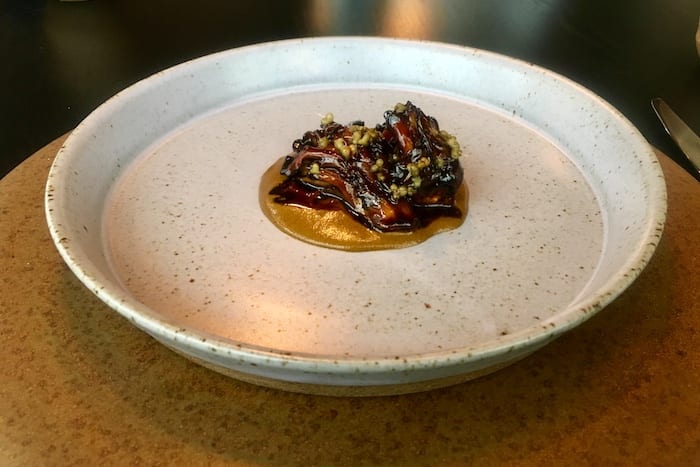
Then three duck tacos arrive. Wild mallard, aged for three days, is cured in fermented rice then barbecued so it’s lightly smoked. The tacos are served alongside the leg of the duck, plus plates of pickled mushrooms, rock samphire, and mushrooms that have been marinated in cep oil.
“Instead of using tortillas we use cabbage,” says Simon. “We’ve seasoned it with a paste made from yeast and fermented plum sauce. What we want you to do is to try and eat each taco in one bite.” Go on, then. I’ve never had tacos quite like this before.
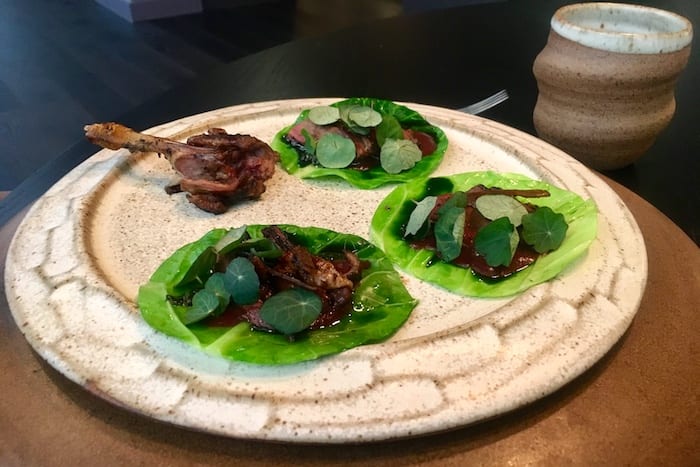
The first of two puddings is “best of the season berries and cream.” Sweet and simple. Well, not that simple – the cream is infused with the stone of a plum for amaretto flavours. Then comes a slab of toasted brioche loaf with chocolate glaze and birch syrup. Hot, sweet, and comforting.
Simon is rightly pleased with the kitchen team he has assembled.
“A couple of chaps have come from Manchester House, a couple of guys from The Forest Side in the Lake District, a guy from Where the Light Gets In in Stockport,” he says. “They’re pretty local. There’s no one from down south as of yet.”

This is just the start for Simon, whose eyes light up at the potential he can see in Mana.
“We want to have a mezzanine, and have a test kitchen, a production kitchen, and create some more jobs. And have a private dining space as well. We want to expand.
“The feedback so far has generally been fantastic. I don’t think everyone knows about us yet, we are relying on people spreading the word.”
Accessible isn’t quite the right word for this place. It’s creative, inventive, unusual and sometimes a little challenging. But I can’t stop smiling about it, and I’m still thinking about the dishes days later.
“Game changer” is an overused term, but it really does apply here. There’s nothing else like this in Manchester. I can’t wait to see what they do next.
Did we miss something? Let us know: [email protected]
Want to be the first to receive all the latest news stories, what’s on and events from the heart of Manchester? Sign up here.
Manchester is a successful city, but there are many people that suffer. The I Love MCR Foundation helps raise vital funds to help improve the lives and prospects of people and communities across Greater Manchester – and we can’t do it without your help. So please donate or fundraise what you can because investing in your local community to help it thrive can be a massively rewarding experience. Thank you in advance!
Got a story worth sharing?
What’s the story? We are all ears when it comes to positive news and inspiring stories. You can send story ideas to [email protected]

New Aldi and Costa drive-thru is coming to Tameside town

Turkish baths building ‘of national importance’ set to be turned into flats
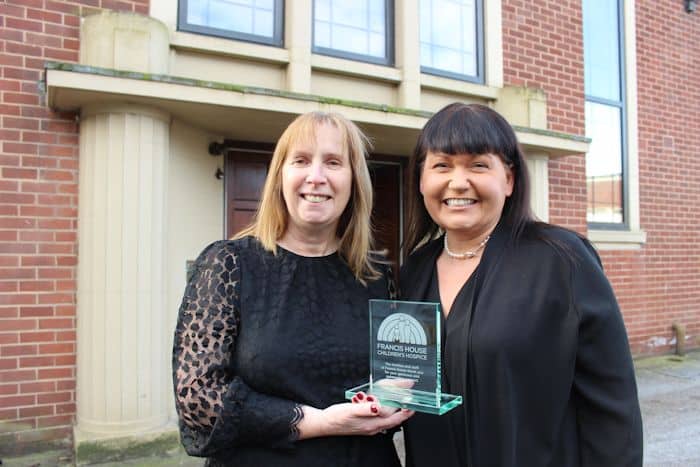
How regular donors make a huge difference to a Manchester children’s hospice

Worker Bee: Meet Katie Zelem, the captain of Manchester United

Worker Bee: Meet Maurizio Cecco, the founder of Salvi’s and Festa Italiana




